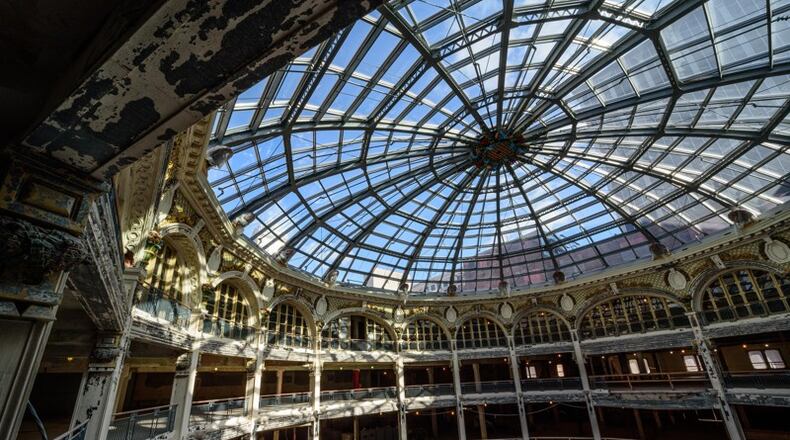“I think this will be the gift that keeps on giving,” Katz said.
RELATED: Dayton can win with homegrown companies
But Katz, who visited Dayton last month, also said he counted 26 layers of financing required to advance the Arcade development, calling that financing a “capital stack from hell.”
In a phone interview this week, Katz said the Arcade deal’s complexity is “emblematic of what you have to do to (execute) a project like this. You have a stack, a whole lot of different tax credits.”
In a recent web post, Katz points to the layers of financing necessary to bring the Arcade project to life, including $22 million in low-income housing tax credits, $15.9 million in Property Assessed Clean Energy funding, $16 million in federal historic tax credits, $12.5 million in New Market Tax Credit equity and $9 million in state historic tax credits.
“And within some layers, there were (additional) layers,” Katz said in his interview with the Dayton Daily News.
MORE: Kroger, Ohio manufacturers file against new proposed DP&L charge
"With all these disparate layers—some of which has layers within layers—it is not surprising that more than 35 attorneys were present at the closing," Katz wrote in a Dec. 5 post on The Philadelphia Citizen web site (https://thephiladelphiacitizen.org/dayton-arcade-urban-renewal/)
“Within a few years’ time, a lot of people will look back and say, ‘Why was it so hard to do that?’” Katz predicted.
In an ideal world, it would be possible for city-centric investors to tap perhaps one readily available source of funding for a project instead of dozens of disparate sources, he argued.
“We don’t have earmarks at the federal level anymore,” he said. “This would have been perfect for an earmark.”
He acknowledged, however, that this kind of project was likely always going to be at least somewhat tricky to navigate from the get-go, with nine buildings at issue, all of them with varying histories, owners and conditions.
“I think it’s always going to be complex to do these adaptive reuse historic kind of deals,” Katz said.
MORE: Thailand veterans exposed to chemicals fight for coverage
But it’s important for cities to have more tools available for renewing downtown cores. “We don’t quite understand anymore in the United States how to do with these kind large-scale transformative projects in inner cities,” he said.
He believes “opportunity zone” market incentives can be useful. Such zones are the market designations created in the federal tax reform passed in late 2017. Those zones could boost the next phase of the Arcade redevelopment — and so could equity investments, Katz said.
“I still think we need a different set of tools for former industrial cities that don’t have the market juice that the coastal cities have,” he said. “That really needs to be discussed in these presidential campaigns.”
“We need some more tools in the toolbox is what it comes down to,” he added.
He praised Dayton city government, Arcade developer Cross Street Partners, and the entire team working on the Arcade project.
Said Katz: “I think you got one of the world-class development teams on this case.”
Dayton City Manager Shelley Dickstein credited Katz with having widespread expertise in urban development. The city manager called the Arcade area a development “black hole” in the heart of downtown Dayton.
For decades, city leaders and downtown advocates watched as owners and would-be developers purchased Arcade properties and did little to nothing before eventually relinquishing the sites to the next owners, who often seemed just as helpless.
That failure to advance the property impacted some one million square feet of downtown property immediately around the Arcade, which in turn ended up being “dark” or generally “underutilized,” Dickstein said.
“We, of course, do believe that it’s going to be very transformative for the city of Dayton,” she said.
If urban centers are to be revitalized, Dickstein added, then financing tools for these kinds of projects need to be more readily available.
“If the urban centers are to be the economic engines of the country, we’ve got to find a way for the urban centers to bring investment and transformative projects like this to the table, that doesn’t take two to three years and 25 different (funding) sources,” she said.
“It could have easily fallen apart because of all the time it took,” she added.


